Global Site
Breadcrumb navigation
Contributing to the safety and cost efficiency of offshore wind power by leveraging NEC's optical fiber sensing technology for the monitoring of submarine power cables
October 31, 2025
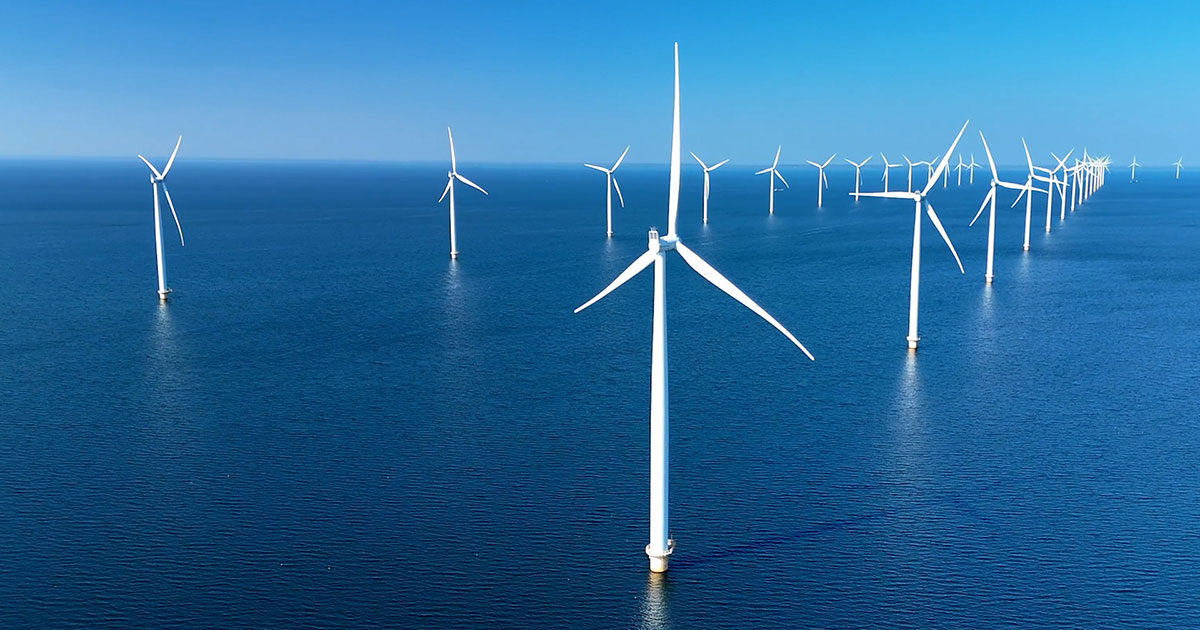
Offshore wind farms, where rows of wind turbines tower above the sea to generate electricity, are often described as the key to renewable energy and are becoming increasingly prevalent in Europe and elsewhere. In the EU, wind power now accounts for roughly 20% of electricity generation, with the share of offshore wind continuing to grow.
In Japan, wind power makes up only a little over 1% of total generation. However, offshore wind power is well-suited to a nation surrounded by the sea, and with government support, projects are being introduced or evaluated in about 30 areas nationwide.
Meanwhile, one of the biggest challenges to wider adoption is cost. A particular concern is the burden of regularly inspecting and maintaining the power cables laid on the seabed. NEC is developing technology to safely and cost-effectively monitor these submarine power cables—the lifeline of offshore wind power—to accelerate its expansion.
Offshore wind power suited to Japan — Operational costs are key to widespread adoption
Offshore wind power offers high power generation efficiency. Compared to land-based turbines, it can harness strong and stable winds without surrounding obstacles, and allows for larger-scale installations.


However, operational costs remain a major barrier. Power cables laid on the seabed over distances of 10 kilometers or more, even if initially secured, may become damaged over time due to ocean currents and other factors. Additionally, buried cables may become exposed, risking damage from ship anchors and other impacts.
Offshore wind power plants are expected to operate for about 20 years. During this period, the power cables must also function reliably.
Cable maintenance requires diver operations, and depending on the scale, costs can reach several hundred million yen. "Finding a way to reduce this burden is key to the wider deployment of offshore wind power," says Koji Mizuguchi of NEC's Smart ILM Division.
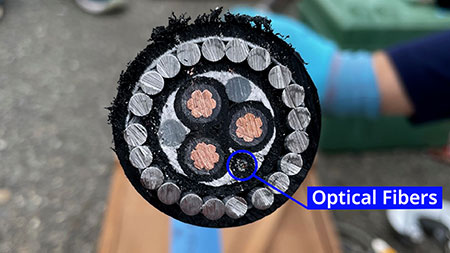
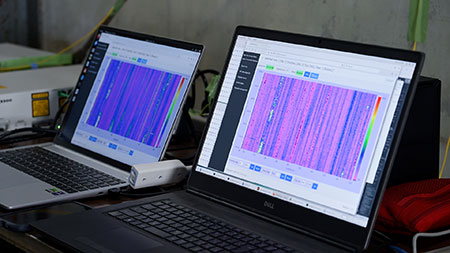
This is why NEC turned its attention to optical fiber sensing technology. Implementation costs can be minimized by using communication optical fibers already installed alongside power cables as sensors.
By analyzing data transmitted through these fibers with AI, the condition of the cables can be monitored 24/7, year-round. This technology has already been applied on some expressways, where optical fibers buried in the road detect pavement vibrations and visualize traffic volume and other data.
Field trials at domestic offshore wind farms and inside a large tank
Can optical fiber sensing be applied to the maintenance of submarine power cables? To answer this question, NEC began conducting repeated experiments. Starting in 2023, experiments were carried out on cables approximately 10 to 20 km long, laid on the seabed at multiple domestic offshore wind farms, confirming that normal wave-induced sway can be detected. To further verify its effectiveness for detecting cable aging or abnormal conditions, additional experiments were conducted using a large water tank in Tokyo.


Measuring 50 meters long, 8 meters wide, and 4.5 meters deep, the tank used in the experiments proved capable of generating waves up to 0.4 meters high. Submerged at the bottom of this tank was a device simulating the submarine power cable.
To simulate the aging of cables, the fasteners are gradually loosened to induce wave-induced vibrations. According to Mizuguchi, "These experiments were a major achievement as they revealed the usefulness of optical fiber sensing for submarine power cables."
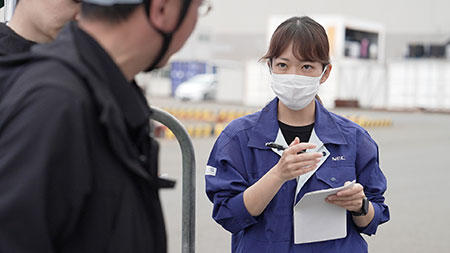
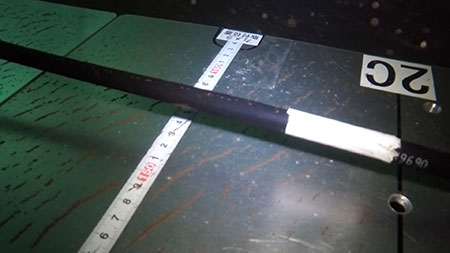

According to Sakiko Mishima of NEC's Advanced Network Research Laboratories, who is in charge of these field trials, "Optical fiber is ideal for long-distance sensing applications." While conventional sensors must be installed for each measurement point, optical fiber enables continuous measurement along the entire cable. This results in massive amounts of data, but by analyzing it using NEC's expertise in AI, the location of any abnormalities can be pinpointed in real time.
Enabling safer and more efficient maintenance operations with optical fiber sensing
If offshore wind power gains traction in the future, it will have a profound impact on companies engaged in maintenance. Takuma Iida, Business Development Manager at Ocean Works Asia Inc., which provides domestic and global underwater infrastructure construction and inspection services, predicts, "As the number of offshore wind turbines increases, we expect the demand for inspections to rise as well." At the same time, it is also true that the work divers perform underwater involves risks. In pursuit of greater safety and efficiency, the company is promoting the introduction of underwater drones and other state-of-the-art equipment.

Expressing his optimism for the future should NEC's optical fiber sensing technology be commercialized, Iida says, "I believe we will be able to more effectively allocate tasks by entrusting routine checks to sensors and AI, while dispatching divers to locations where anomalies are predicted."
Achieving carbon neutrality is a global challenge, and NEC is tackling it by combining its long-cultivated expertise with the latest digital technologies. Beyond this, NEC remains committed to achieving its Purpose of creating the social values of safety, security, fairness and efficiency to promote a more sustainable world where everyone has the chance to reach their full potential.

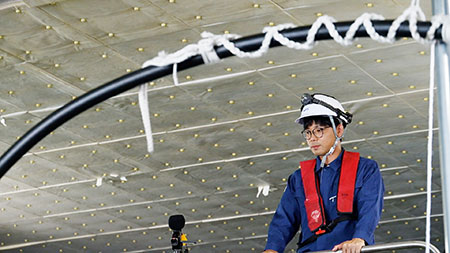
Wind power generation faces both tailwinds and headwinds. Mizuguchi shares his vision for the future, saying, "We aim to achieve efficient power plant operations, contributing to the expansion of renewable energy and the stable supply of electricity."